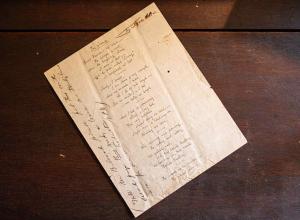Sotheby’s to Auction the Earliest Detailed Account of the Gunpowder Plot
On 9 December 2014, Sotheby’s London will offer for sale the earliest detailed account of one of the greatest “what if” moments in British history, the Gunpowder Plot, when a group of religious extremists almost succeeded in annihilating nearly the entire English political class in November 1605.
Announcing the discovery of the gunpowder plot, the letter gives a detailed narrative account of ‘the most cruell and detestable practise, against the person of his majesty, and the whole estate of this realme, that ever was conceaved by the hart of man.'
This historic letter was sent by one of the intended victims, the Earl of Salisbury, to Sir Ralph Winwood, the English ambassador at The Hague, on 9th November 1605 just four days after the plot's discovery. Estimated at £40,000-60,000, it has been in the collection of the Harcourt family since the 19th century.
It was one of a number of similar letters Salisbury sent to ambassadors in Europe at this time, not only to pass on the “breaking news” of the case, but also to help curtail the “malicious discourse, and invention" spreading like wildfire across the Continent. It can be counted among the most important historical documents to appear at auction in recent years.
Written even before the true identity of the perpetrator Guy Fawkes had been uncovered (when he was arrested he claimed his name was John Johnson), the letter provides a fresh and privileged insight into the origins of England’s 400-year-old Bonfire Night festival, inaugurated just three days before this letter was written, when the people of London were given permission to light bonfires in celebration of the King’s deliverance.
The letter is rich in lively detail, describing for instance Fawkes’ seemingly relaxed reaction to being captured in the cellars of Parliament: he was "no more dismayed then if he weare taken for a poore robberye, by the highe waye", however this was a crime for which he would be tortured for information at the Tower of London, and later hanged, drawn and quartered.
As Secretary of State, Salisbury was at the very heart of the English political system and an experienced and cynical operator in a dangerous political world, but in these pages he brings vividly to light the long-forgotten shock and horror underpinning of one of England’s most beloved winter celebrations: "intended, not onely the extirpation of the kings Ma[jes]ty, and his Issue Royal but the whole subversion and downefall of this Estate, the plott being to take away, at an instant, the King, Queen, Prince, Counsell, Nobility, Clergie, Judges, and the principall gentlemen of this Realme.”















